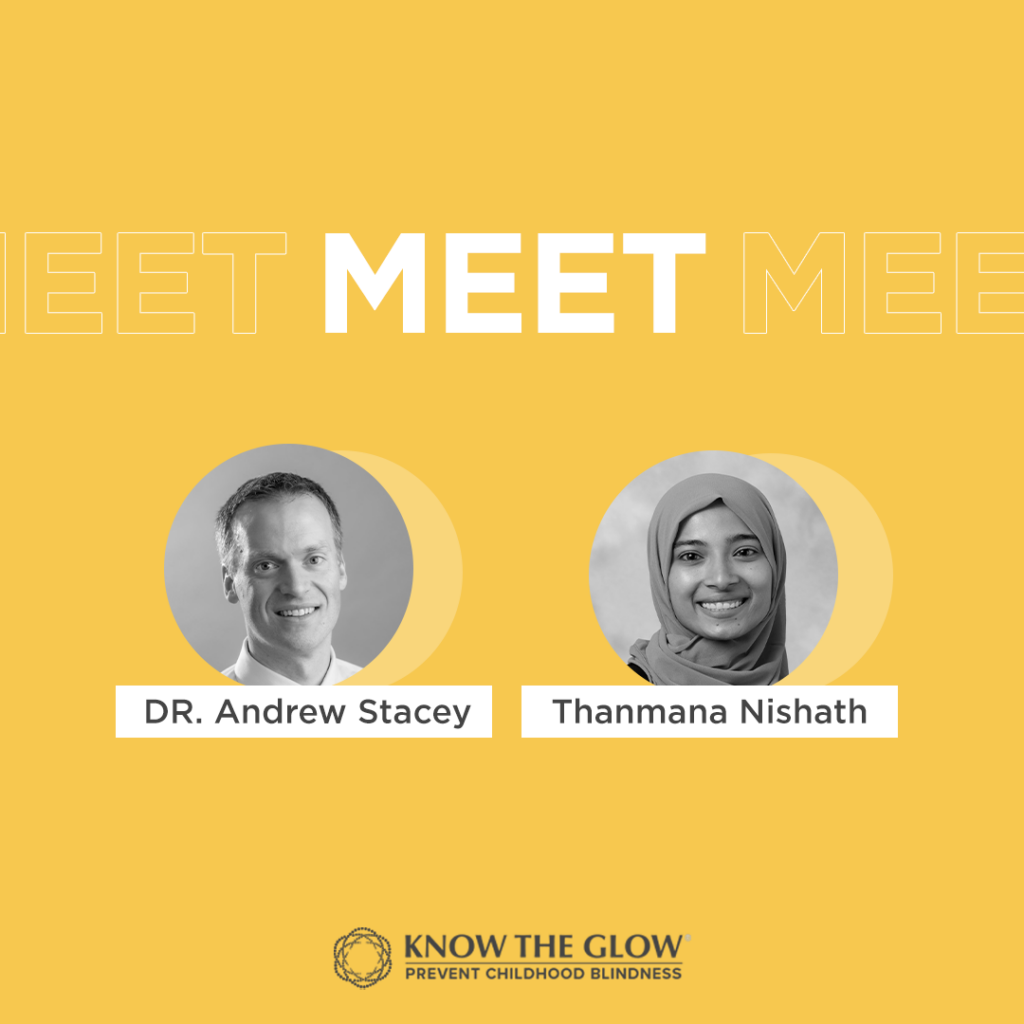In the world of ocular health, the incidence of retinoblastoma (RB) has remained a pressing concern, especially in regions where resources are scarce. The conversation with Dr. Andrew Stacey, an Ophthalmologist at the Eye Institute at Harborview, University of Washington and a UW assistant professor of Ophthalmology, who Megan Webber first met at the ISOO Conference in Mombasa, Kenya, was one that KnowTheGlow had been looking forward to in order to better understand the gravity of RB’s impact globally.
Dr. Stacey, a luminary from Seattle Children’s Hospital, and his astounding and innovative resident, Thamanna Nishath, were instrumental in presenting groundbreaking research on RB incidence in collaboration with Didi Fabian that left a major impact on all who heard him speak. Their study revealed a staggering reality: a significant portion, 50%, of RB-related fatalities occurred in Africa, where survival rates were alarmingly low.
The genesis of this impactful project stemmed from the realization, just three years ago, that despite the long-standing knowledge of late presentations of RB in African countries, the actual numbers had eluded comprehension. This realization was the impetus for creating an international compilation of RB cases, spearheaded by Dr. Fabian, uniting efforts within the RB community like never before. His study showed that with 24 of the 27 LMICs in the world being in Africa the survivability of RB was only 66% at the three year mark post diagnosis meaning that ⅓ of Africa’s known cases of RB would lead to death for children in the region and that the results all depended on stage of disease at diagnosis. Megan shared with Dr. Stacey that the result of his study on the incidence of RB in Africa has changed the trajectory of KTG’s global awareness plans. KTG is now in the process of prepping perpetual mini-awareness campaigns for francophone and anglophone African countries that will run continually in the background even as KTG moves on to other countries around the world with our traditional awareness campaign programs.
Dr. Stacey and Thamanna’sstudy painstakingly gathered data on diagnosed children worldwide, highlighting a stark contrast in survival rates between high and low-income countries. Dr. Stacey, an ophthalmologist deeply involved in RB cases, found the dichotomy in survivability unparalleled by any other disease. Thamanna , pivotal in assembling the study’s statistical insights, brought her background in international health disparities based on her work in South Africaand Bangladesh, which had given her unique insight into the profound impact of resource scarcity on health outcomes. Witnessing RB’s toll, especially in resource-deprived regions, was a poignant reminder of the emotional and tangible ramifications faced by affected families. Her understanding of the barriers and perceptions surrounding RB emphasized the urgent need for early intervention. Her work highlighted the need for increased awareness and practical solutions to bridge the gap between cultural priorities and medical necessities.
Looking forward, both Dr. Stacey and Thamanna emphasized the crucial need for understanding the perspectives of families who arrived late for treatment. As Thamanna pointed out, this exploration could help provide critical insights into what could have made a pivotal difference in their journey that expands solutions beyond the clinical setting. Dr. Stacey underscored the importance of both raising awareness and incorporating families’ experiences. He cited instances where simple awareness campaigns have proven effective in other regions, emphasizing the need to replicate such strategies in affected areas. Notably, success in curbing treatment abandonment was observed in facilities that minimized the shock of eye removal surgery and fostered support networks among families undergoing similar experiences. Megan, Dr. Stacey and Thamanna discussed how KnowTheGlow’s focus on sharing and highlighting patient stories while building awareness is an important tool that can help in reshaping perceptions and fostering community understanding.
The vision ahead involves leveraging established national media platforms to disseminate critical information about RB, with an aim toward seamlessly integrating knowledge into popular programming. Additionally, initiatives like ISOO support in Africa aim to foster collaboration among local doctors, focusing on region-specific nuances in RB treatment and management. The collaboration within RB-Net, a global initiative, underscores the importance of collective action and expertise sharing to address RB challenges comprehensively.
Finally, Dr. Stacey suggested a research-centric approach to evaluating the effectiveness of various awareness campaigns in different locations. The idea would be to understand which strategies yield the most significant impact and leverage these findings to guide future campaigns, ensuring optimal resource allocation and widespread success.
The collective efforts of researchers, doctors, and advocates like Thamanna and Dr. Stacey represent a beacon of hope in the fight against RB. Through data-driven insights, cultural understanding, and strategic initiatives, the aim remains to transform the narrative of RB from one of despair to one of hope and progress for affected families worldwide. KTG commends the astonishing and groundbreaking research of Dr. Stacey and Thamana and many others in their field and we are excited to see what will be built upon the groundwork they’ve laid for the RB community worldwide.

